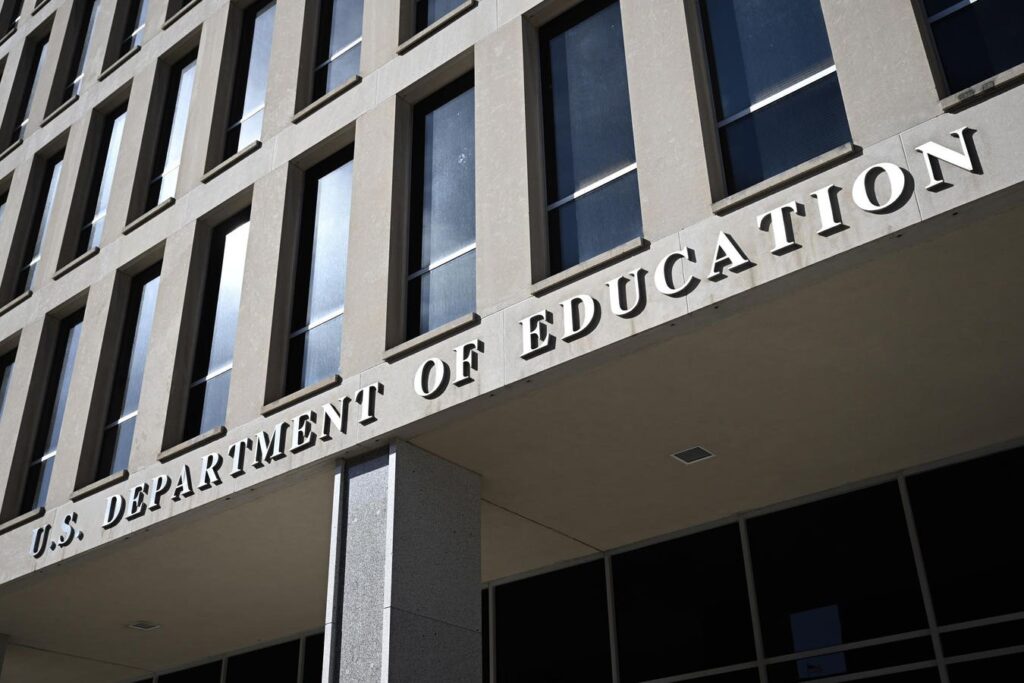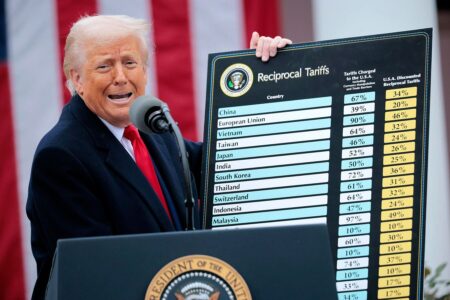A consumer rights advocacy organization issued a dire warning on Friday, urging student loan borrowers to immediately save or screenshot critical records that provide details on their payment history and student loan forgiveness progress.
In the last month of the Biden administration, the Department of Education published tracking information for borrowers enrolled in income-driven repayment plans. IDR plans provide borrowers with monthly payments based on their income and family size, with the possibility of loan forgiveness after 20 or 25 years. Until this year, borrowers had no way of tracking their IDR progress, and there was no mechanism for them to easily determine how many IDR payments they have made, and when they might qualify for student loan forgiveness. But advocates are increasingly concerned that under the Trump administration, the department may simply remove this critical information.
“We have seen the federal government remove lots of information from government websites” recently, said the National Consumer Law Center in a blog post published on Friday. “Borrowers should therefore save this information while they can, in case it is removed from their accounts. Do it today!”
Here’s what student loan borrowers need to know.
IDR Counter Tracks Borrowers’ Payments And Student Loan Forgiveness Progress
The IDR counter is located in student loan borrowers’ StudentAid.gov accounts, typically on their main dashboard when they first log in. It has been visible since January for most borrowers currently enrolled in an income-driven repayment plan. The counter shows how many months and years a borrower has remaining before qualifying for IDR student loan forgiveness. Borrowers can get more detailed information on their progress by clicking a link in the counter, which opens up a new page that can show the month-by-month breakdown of payments that have been counted under IDR plans.
Without this information, borrowers may have no idea how much more time they have left on an IDR plan before potentially qualifying for student loan forgiveness. And given longstanding record-keeping issues associated with loan servicer transfers, a borrower’s current loan servicer may not readily have this information, either.
“If the IDR progress tracker is removed from borrowers’ accounts, it will be much harder for borrowers to make informed decisions about how to manage their loans,” said the National Consumer Law Center in its blog post. “For example, right now, if you consolidate your loans your consolidation loan will start with no months credited towards IDR forgiveness, regardless of how long you were in an IDR plan previously. Without the tracker, it will be difficult for borrowers to know how much time toward cancellation they stand to lose.”
NCLC also noted that knowing how much time remains on a borrower’s IDR student loan forgiveness term is critical, not only for making personal financial decisions but also because they may not otherwise know when they are eligible to receive the critical student loan forgiveness benefit that they are entitled to under federal law.
“Removing the tracker would make it harder for borrowers to make sure they actually get their loans cancelled when they are eligible for cancellation, and to dispute any mistakes the government or their servicers may make by failing to credit borrowers for qualifying time in repayment,” said NCLC. “We hope that the Department will not take this critical information away from borrowers, but it is best to be prepared in case it does.”
Which Key Student Loan Forgiveness And Repayment Records Borrowers Should Save
While the Department of Education has not made any public announcements indicating that the removal of the IDR counter is imminent, NCLC’s urgent warning suggests that borrowers should not delay in saving this critical information, if they have not already done so.
“We are encouraging borrowers to screenshot their IDR progress tracker on studentaid.gov and to save it as soon as possible,” said NCLC. Even if borrowers saved this information when the tracker was first published in January, it’s not a bad idea to save it again, particularly if the information has updated since then.
To do this, borrowers should first log into their account at StudentAid.gov. Those who have already been enrolled in an IDR plan (whether that’s SAVE, ICR, IBR, or PAYE) should see their IDR counter as a dark green box visible on their account dashboard.
“Take a screenshot of your dashboard that includes this IDR End of Payment Term information and save it to your files,” says NCLC. “Or print the page to PDF and save to your files.”
Borrowers who want to retain more detailed tracking information should click the link under the dark green IDR counter box that says “View IDR progress.” That will open up a separate page that provides much more detailed information, not only on the borrower’s aggregate IDR payment count, but also the month-by-month breakdown of qualifying IDR payments. For borrowers who are pursuing Public Service Loan Forgiveness and are familiar with the PSLF Tracker (also available at StudentAid.gov), the detailed IDR tracker may look similar.
“If you want to have records of all of your qualifying months of payments, and especially if you attended school during different time periods and have multiple loans that have different payment counts,” borrowers should screenshot and save this information, as well, says NCLC. “This additional information will put you in the best position to protect the progress you’ve already earned against any attempts to take it away or any servicer mistakes.”
Warning About The IDR Counter Comes As Repayment And Student Loan Forgiveness Remain In Turmoil
NCLC’s urgent warning about the IDR counter comes as the entire IDR system remains mired in turmoil. The SAVE plan, the newest IDR program launched by the Biden administration in 2023, remains blocked under a court order following a legal challenge brought by a coalition of Republican-led states last year. Most observers expect SAVE to ultimately get struck down or repealed by Congress. Meanwhile, student loan forgiveness under the PAYE and ICR plans has also been blocked after the same court that blocked the SAVE plan called into question the legality of loan forgiveness under these programs. Separately, the Department of Education has launched a rulemaking process to change regulations governing these programs.
The IBR plan, which was passed separately by Congress, technically is not impacted by the legal challenges threatening SAVE, PAYE, and ICR. However, in February the Department of Education removed the combined IDR application used for all four plans and suspended all processing. A national labor union filed a lawsuit against the department, arguing that the systemwide IDR shutdown is illegal. In response, the department restored access to the IDR application and has indicated that processing is expected to resume within two weeks. But advocacy groups are skeptical that loan servicers will be able to efficiently work through what is now a backlog of 1.9 million applications.
Separately, President Trump has threatened to limit eligibility for student loan forgiveness under the PSLF program, and he directed the Department of Education to draft new rules to cut off eligibility for organizations deemed to be engaged in “illegal” activities. The department is expected to hold its first public rulemaking session for PSLF, PAYE, and ICR next week.
Read the full article here











